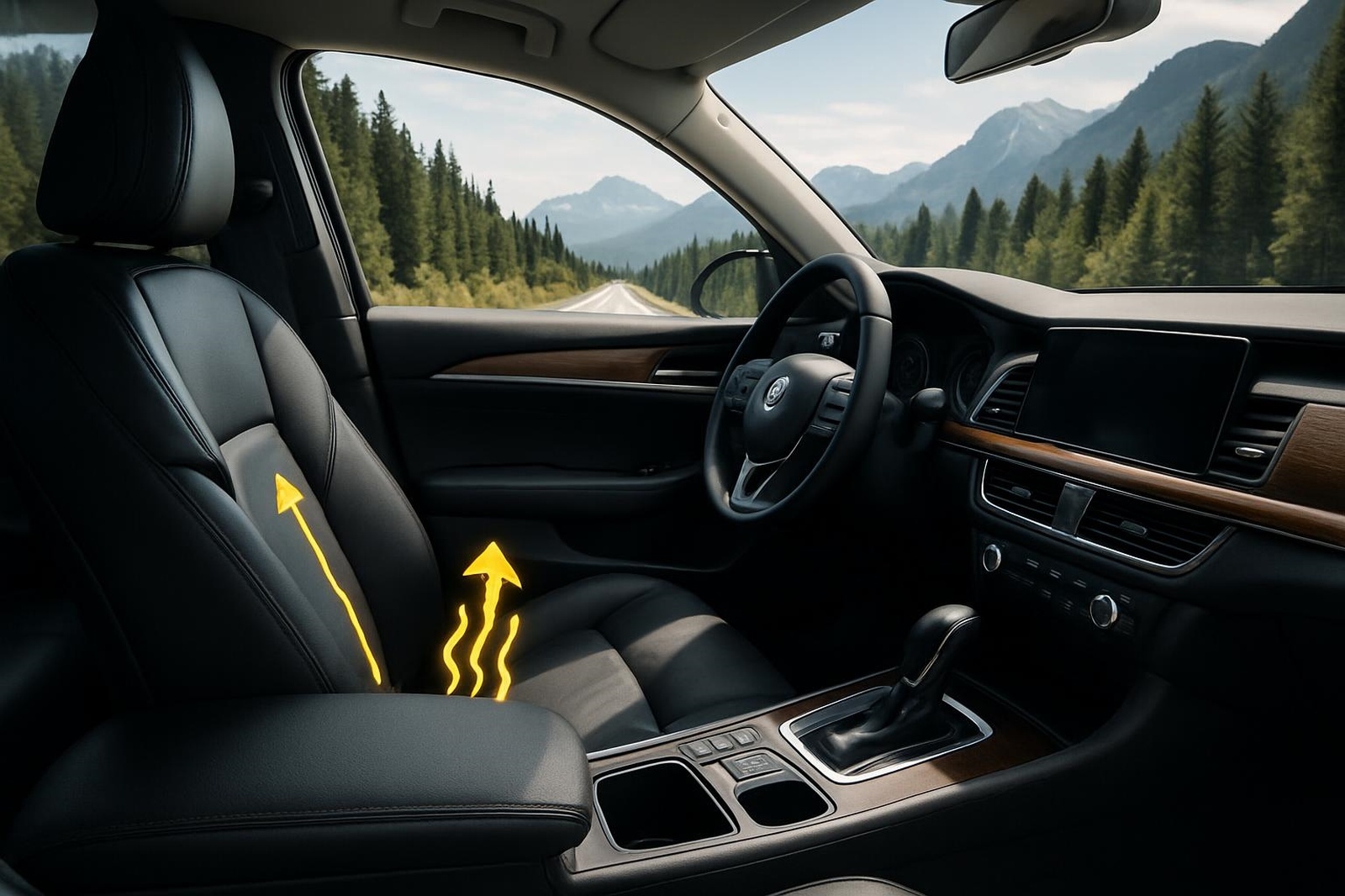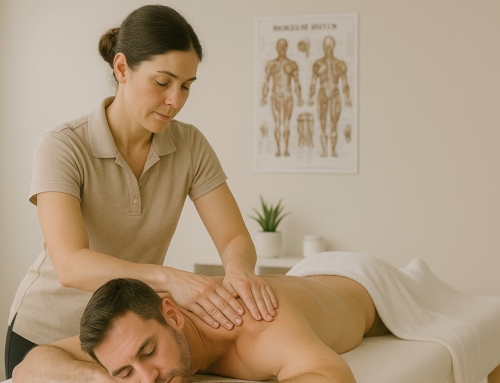Long road trips are a fantastic way to explore British Columbia and enjoy memorable experiences; however, we’ve seen that sitting for prolonged periods can often lead to discomfort, especially in the lower back. The combination of limited movement, poor posture, and inadequate support in car seats puts stress on your spine, which can trigger or worsen existing back pain. Thankfully, there are practical steps you can take to minimize the risk and make your journey comfortable and pain-free.
We can tackle lower back pain on long drives by adjusting our posture, taking regular movement breaks, and staying properly hydrated. We might be biased in saying this, but regular chiropractic care before and after a long journey can also be beneficial in addressing existing spinal imbalances and reducing the risk of discomfort. We have seen how small changes to your seat angle, and adding simple stretches, make a real difference in reducing strain during your trip. These quick adjustments take just minutes to set up but give you hours of comfort, keeping your spine supported from start to finish.
Proper Luggage Handling and Packing
Smart luggage handling and packing prevents back strain before your road trip starts. We recommend choosing lightweight, wheeled luggage over heavy backpacks. When you’re loading your car, lift with your legs and keep items close to the boot edge so no overreaching needed. Ensure you keep back pockets empty while loading to avoid spinal misalignment during heavy lifts. Balance the weight across your vehicle and secure everything properly so nothing shifts during travel. Keep items you’ll need within easy reach to avoid twisting your spine. A bit of planning now saves you from back pain later.
Ergonomic Driving Position Setup
Setting up your driving position properly reduces back pain and tiredness on long drives by keeping your posture correct, whether you’re heading out from our ‘hood in Surrey or anywhere else in BC. Start with your seat by angling the backrest between 100-110 degrees and make sure the lumbar support fits snug against your lower back’s natural curve. Position your steering wheel so your arms stay slightly bent when you reach for it. One piece of advice we like to mention is that elbows are ideally kept between 95 degrees and 120 degrees, as well as try to place your feet flat to prevent muscle tension. This careful adjustment of seat height and foot placement minimizes the risk of avoiding leg strains and other common driving injuries caused by poor posture.

Scheduled Movement and Stretching Breaks
Since sitting for hours tightens your muscles and reduces blood flow, you’ll need movement breaks every hour to prevent lower back pain. Chiropractors suggest incorporating gentle stretches such as seated twists, hip flexor stretches, and hamstring stretches during these breaks to maintain flexibility and spinal mobility. We recommend 10-15 minutes each hour for walking and stretching, as it aligns with professional chiropractic guidance to optimize joint function and muscle relaxation. Regular breaks stop stiffness from building up and keep your back healthy and comfortable throughout the trip.
Try these specific stretches at each stop:
| Stretch | Primary Benefit |
|---|---|
| Trunk Rotation | Loosens spine, improves flexibility |
| Child’s Pose | Relieves lower back tension |
| Hip Flexor Stretch | Reduces strain on lower back |
| Seated Figure Four | Relieves hip & lower back tension |
| Glute Bridge | Engages glutes to support back |
Plan your breaks at safe locations where you can move freely. This keeps your body mobile and comfortable during long drives. Also, make sure to do some quick stretches after your road trip to further increase your comfort.

Distraction Techniques for Comfort
We help shift your attention away from back discomfort through simple methods that work. Start conversations with fellow passengers or play road trip games like spotting license plates. Listen to music, podcasts, or audiobooks to take your mind elsewhere. Try mindfulness methods like breathing exercises and visualization. You can read, write, or do seated stretches during the ride if you aren’t driving.
Hydration and Nutrition Strategies
Staying hydrated and eating right makes all the difference when you’re stuck behind the wheel for hours with lower back pain. Keep sipping water regularly as it stops your muscles from cramping up and keeps everything loose. Also, make sure to pack a water bottle where you can reach it easily.
We recommend light meals and snacks that fight inflammation, like fresh fruit or a handful of nuts. Skip the heavy stuff that leaves you feeling bloated and uncomfortable. Go for electrolyte drinks with less sugar, and don’t overdo the caffeine; both will help you avoid getting dehydrated, which only makes back pain worse.

Frequently Asked Questions
Can Pregnancy Affect Road Trip Back Pain Prevention?
Yes, pregnancy definitely changes how you handle road trip back pain prevention. Your centre of gravity shifts, muscles strain differently, and your posture changes throughout the months. We recommend using maternity support belts, doing gentle stretches before you travel, and stopping every hour to walk around. These simple steps help keep your back comfortable when you’re expecting and travelling long distances.
Do Existing Back Conditions Require Different Preparation?
Yes, existing back conditions do need special preparation. We recommend working with your doctor to get proper medical advice. Adjust your seat settings, consider therapy options, and pack supportive items like cushions before you travel. These simple changes can make a real difference to your comfort.
Should I Use Heated Seats for Back Pain?
Yes, we recommend heated seats for your back pain. Think of them like a heating pad built right into your car seat. The warmth helps relax tense muscles and boosts blood flow to the area, which can reduce stiffness and discomfort during your drive. We’ve found this particularly helpful for our clients who experience morning stiffness or spend long hours commuting.
Can OTC Pain Meds Interact With Driving?
Yes, OTC pain medications can absolutely affect your driving ability. Many of these medicines cause drowsiness, dizziness, or blur your vision, which makes concentrating on the road dangerous. We always check medication labels for warnings about driving and operating machinery. If you’re unsure about side effects, speak with your pharmacist or doctor before getting behind the wheel. Your safety and that of other drivers depends on making informed choices about when it’s safe to drive after taking pain relief.
Is Reclining the Seat Safe and Helpful?
Yes, reclining your seat can be both safe and helpful when done properly. We recommend reclining to about 15-30 degrees – this angle helps reduce back strain during your journey. However, we advise against going further back than this. Excessive reclining weakens your seatbelt’s effectiveness and reduces crash protection. The key is finding that sweet spot where you’re comfortable but your safety systems still work optimally for you. Small adjustments make a big difference to your comfort without compromising your protection.






